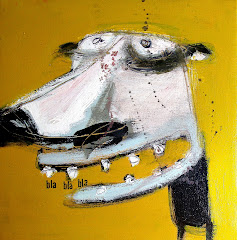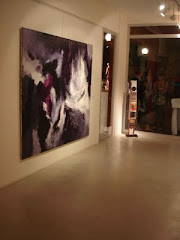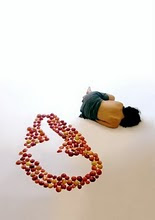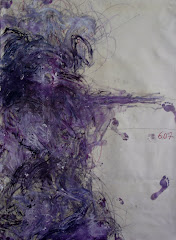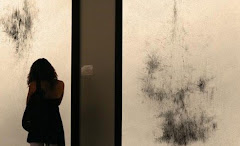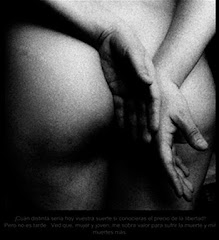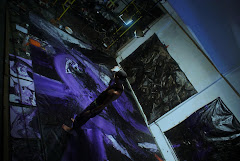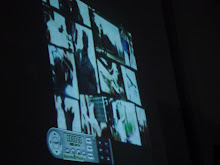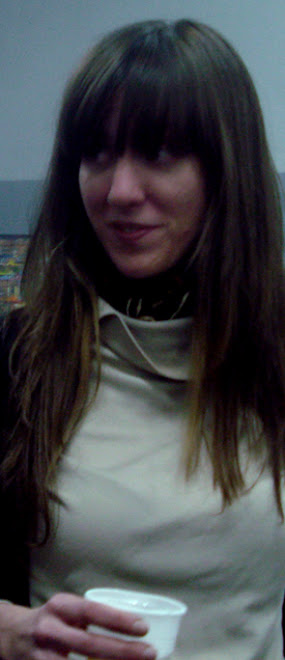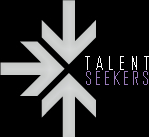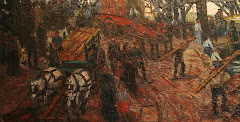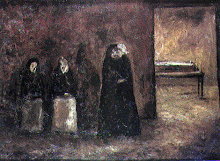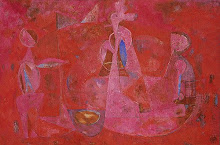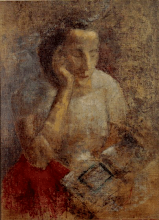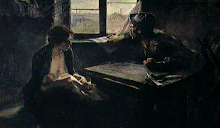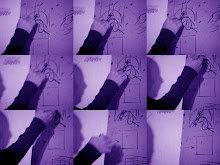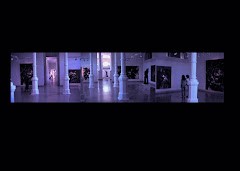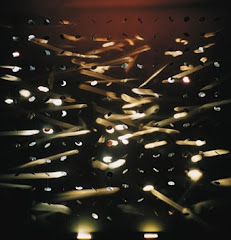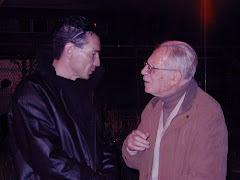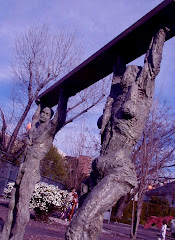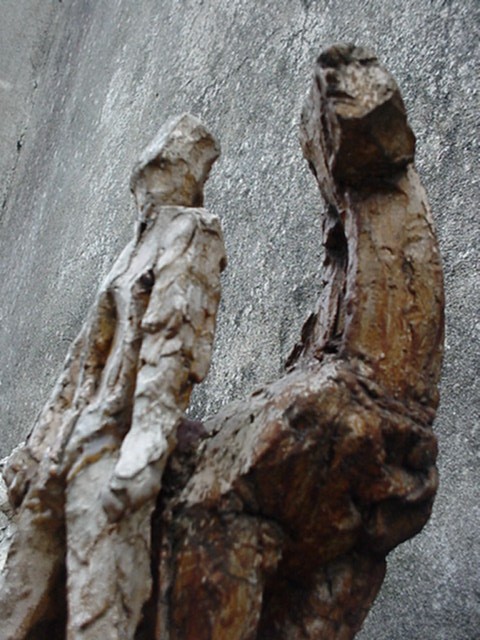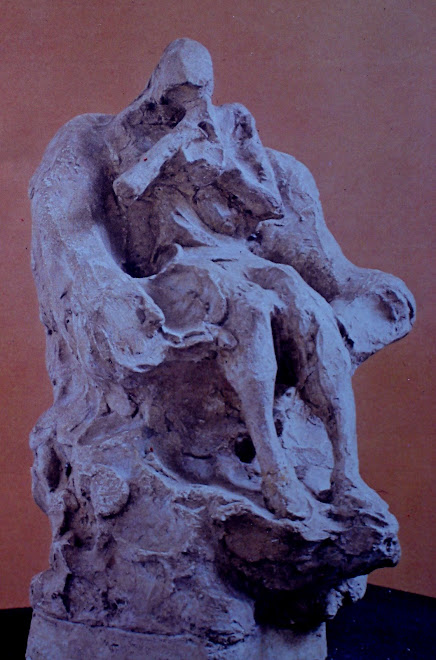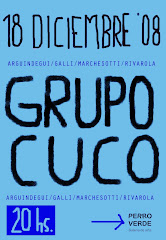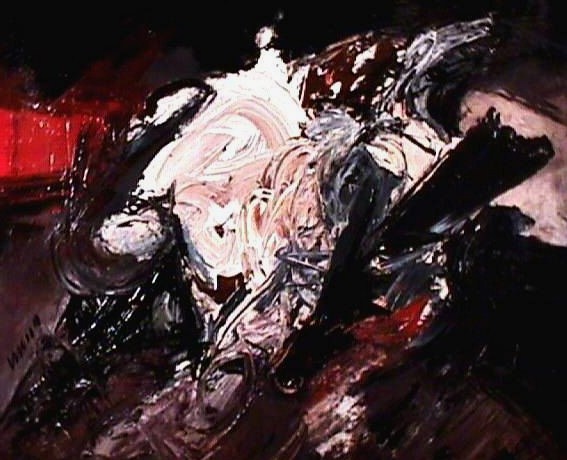Recomendado por el Equipo GC / BUENOS AIRES / ARGENTINA
.
.
.
SEMESTER AT SEA COURSE SYLLABUS
Discipline: Studio Arts
Fall 2008
Introduction to Drawing I
Lower Division
Instructor: Gustavo Fares
COURSE DESCRIPTION
This course serves as an introduction to drawing as an art form. It is designed for students with no previous background in art, but it will also allow the more experienced art students to develop their skills. Students will gain knowledge of drawing media and techniques in order to better express their visual ideas. The course will consider form, value, composition, the object in space, and the picture plane. Precise observation as well as imaginative and conceptual approaches will be used to help students broaden their imagination and develop their visual language. Subject matter will come from the ports we visit, sketching on site, the ship, shipmates, collected mementos, and journal drawings. Students should expect to gain skills in conveying their vision through drawing, increase their visual perception, and have a stronger aesthetic understanding of art. The final product of the course will be a portfolio of drawings (made in class and as homework), and a drawing journal based primarily on material gathered during shore excursions. There are no pre-requisites for this course.
COURSE OBJECTIVES
The primary course objective is to introduce students to the fundamentals of drawing. In order to develop the hand-to-eye coordination necessary to render the three dimensions of visual experience to the two dimensions of the picture plane, the students will focus on the following areas:
· Acquisition of technical abilities in introductory drawing processes including:
a. Sensitivity to materials and process
b. Black and white imagery, values
c. Mark-making and line quality
d. Techniques of composition, light and space
e. Experiment with drawing genres (still-life, interiors, landscape, portrait, and figures)
· Compare and contrast media-specific differences and importance between drawing and other art disciplines.
· Develop an aesthetic and critical awareness of drawing, with special emphasis on concept and content.
· Develop effective visual and critical communication skills.
· Apply creative problem solving strategies and ideas in order to make drawing an expressive art form
Students will be encouraged to use their developing skills to record their impressions of the places we visit throughout the voyage.
Requirements & Expectations:
• Successful completion of the exercises and assignments, including the final portfolio and the drawing journal
• Active participation in class work and discussion. Bring energy, ideas and commitment to class!
• Attendance record that meets school and instructor policies.
• Safe and careful use of all materials, tools, equipment, and studio.
A majority of the work will be started during class time. It is not possible to “make up” a missed class. Demonstrations are given in almost all classes, therefore it is imperative to attend each session. It is also essential that students are prepared for each class, focus on the work, and participate in class discussion and critique. All safety and clean up procedures must be followed. Be considerate and respectful of instructor and fellow classmates. Headphones may be worn during work time only.
OUTLINE OF COURSE
August 29. Depart Nassau, Bahamas
Class Session 1 - Welcome. Orientation to class. Intro to materials (papers, charcoal, newsprint, pencil, crayon, erasers, watercolor pencils, etc.)
· keeping a drawing journal, with sketches of shore images, as well as from aboard the ship; can use written notes or collage materials;
· making a 1st drawing to measure progress against
Assignment: Complete a drawing (9”x12”) for next class. The style and subject matter are open.
Class Session 2 – Discussion of first drawings. Presentation: General concepts: line, points of intersection, definition of space, value, eye-hand coordination. Drawing as two dimensions: Still Life and its uses during the trip. Assignment: make a line drawing of a simple object.
Class Session 3 – Discuss homework drawings in terms of line constancy, points of intersection, overlaps, and space. Complete a structured drawing with correct proportions from still life provided in class. Preparation for port drawing.
September 7-11. Salvador, Brazil
Class Session 4 – Discussion of drawings of still life and from port. Work in class on drawing simple forms from the ship, then proceeding to more complex shapes. Presentation: Use of ship as still life / architecture. Principles of perspective. Positive and negative spaces. Assignment: Complete a structured drawing with correct proportions from parts of the ship.
Class Session 5 – Discuss drawings of ship in terms of composition and framing.
Presentation: Full value range with pencil & charcoal. Defining the form with value & reflective light.
Drawing Strategies. Assignment: From a still life set up in class, prepare a drawing using graphite. A full value range should be represented in the drawing. Work Day on still life Drawing.
Class Session 6 – Discussion of still life drawings. Values, positive/negative space, continued. From still life set up in class, prepare a drawing using only charcoal, using a full value range. Work Day on still life drawing. Preparation for port drawing.
September 19-23. Walvis Bay, Namibia
Class Session 7 – Discussion of drawings of still life and from port. Presentation: Dark to Light. Working in Reverse; Erasing & removing material as a means of mark-making. Assignment: Dark to Light. Create a flat black surface area with charcoal or india ink from which to work on and develop the image by using erasers, blending stumps, and/or white conté crayons. Use ideas from ship, still life, spaces, port visits. Preparation for port drawing.
September 26-October 2. Cape Town, South Africa
Class Session 8 – Discussion of drawings: Working in Reverse and from port. Presentation: Drawing from Nature & Perspective. Planning & building the scene. Visual texture. Assignment: Complete several drawings from the outdoors, experimenting with different styles and energies; work some ideas from port, into landscapes.
Class Session 9 – Discussion of drawings. Class work will use perspective, line, value, and landscape techniques to render the ship’s architecture, and / or the sea as landscape. This is different from the daily journal in that it is a developed drawing, not just a visual notation.
Class Session 10 – Discussion of drawings. Presentation: Combination drawings: examination of different artists. Blending of visual ideas and port notes to develop a finished landscape drawing, using the techniques practiced. Assignment: Complete two sketches using two different styles and / or artists to create a unique or “new” drawing. Document your reasoning for choosing these artists to assist you in the oral presentation during critique.
Class Session 11 – Discussion of combination drawings. Combination Drawing Work Day.
Class Session 12 – Discussion of drawings. Cloud exercise: Completion of cloud drawing as still-life /landscape. Use of different techniques. Preparation for port drawing.
October 14-18. Chennai, India
Class Session 13 – Discussion of drawings from port. Presentation: Self Portrait Drawing. How do we see ourselves? Techniques for drawing portrait. Blind, Continuous Line, & Memory Drawings will also be explored. Assignment: Create several contour drawings of your face.
Class Session 14 – Discussion of drawings. Class work on portraits. Different techniques. Preparation for port drawing.
October 22-26 Mar. Penang, Malaysia
Class Session 15 – Discussion of drawings of self-portrait and from port. Work on personal ideas from ports. Preparation for port drawing.
October 30- November 3. Ho Chi Minh City, Vietnam
Class Session 16 – Discussion of drawings of self-portrait, and from port. Presentation: The Figure as Art. Drawing a live person. Attention to detail, mood, & drama to bring artistic flair & interpretation. Gesture Drawing, Mapping Proportions, Value Range & Foreshortening. Create several drawings in class that focuses on proportion, scale & how the figure exists in space. Assignment: Drawing of a figure. Graphite with Cross-Hatching, Compressed Charcoal & Crayons are used to build a full value range. Create several drawings from different angles of a person (yourself, a classmate, etc.). Preparation for port drawing.
November 6-7. Hong Kong
November 10-11. Shanghai, China
Class Session 17 – Discussion of drawings. Work on figures and ideas from ports.
November 14-15. Kobe, Japan
November 17-18. Yokohama, Japan
Class Session 18 – Discussion of drawings. Thumbnail sketch from onshore images. Presentation: Light as compositional structure. Assignment: Apply the light and shadow concepts to two onshore images.
Class Session 19 – Discussion of drawings. Expand thumbnail sketches from onshore images into finished drawings.
Class Session 20 – Discussion of drawings. Presentation: Marks and lines- marks as pattern. Assignment: Create a series of three (3) drawings that depict a cohesive thought using any or all of the methods previously shown throughout the term.
Class Session 21 – Discussion of drawings. Work Day for series drawings.
November 27. Honolulu, Hawai'i
Class Session 22 – Discussion of drawings. Work Day for series drawings and expanded drawing from onshore or landscape image. Finish work. Prepare for final critique.
Class Session 23 – Discussion of drawings. Final critique based on portfolio for evaluation.
December 7-9 Puntarenas, Costa Rica
December 11, Panama Canal
December 12. Fort Lauderdale, Florida
FIELD COMPONENT
Students will keep a drawing journal of onshore excursions. The field component portion of the course will consist of at least two drawings per shore day. Collages of visual elements gathered ashore could be appropriate additions to the drawing journal. The drawings will serve also as bases for finished drawings based on images selected from the onshore component.
Evaluation Criteria
Keep in mind that it is the student’s responsibility to fulfill the class requirements, showing initiative in quality of work and investigation. Individual growth throughout the semester is extremely important. Grades are designed to give students some indication of this growth, and provide a record of achievement, based on completion of class work, homework assignments, and drawing journal.
Grade Distribution
Successful completion of work in class 60%
Homework assignments 20%
Drawing journal 20%
REQUIRED MATERIALS:
Paper: The finest quality papers are handmade of linen and cotton rag fibers, known as 100% rag paper, neutral pH (containing no acidity or sulfur), so it doesn’t yellow with age. All paper has a different surface. Experiment with different papers to see how they hold up to the materials. A smoother surface yields a better, more fluid mark which is easier to erase. A rougher texture paper tends to hold onto the pigment and dent the paper, which makes the removal of material much more difficult.
Drawing Pad 18X24” 100 sheets
Sketch album (wire), 100 sheets, 14"x17, 65 lb weight paper
Hard Bound sketchbook, 50 sheets, 5.5"x8.8" (60 lb weight paper or higher)
Drawing Wire sketchbook, 60 sheets, 9"x12" (60 lb weight paper or higher)
Tools
Vine charcoal soft
Compressed charcoal (black, white, sepia, grey)
Charcoal pencils: soft and hard
Pencils: 6B, 4B, HB
Watercolor pencils, set of 12
Calligraphy or India Ink (Black)
Sketch sticks (black, white, sepia, grey)
Micropen. Sizes .5, 1, and 3 / Art Marker
Brushes
Small bamboo brush
Other brushes; fan brush, horse hair brushes, etc.
Other
Pencil sharpener
Pink pearl eraser (large)
Blending stumps / cotton soaves
Cup for water
Cellulose sponge
Hobby knife & Replacement blades
Soft cloths
2 Matte Spray Fixers
Tackle box for tools, brush-storing mat, plastic tool holder (optional)
RESERVE LIBRARY LIST
AUTHOR:
TITLE: Hokusai and Hiroshige: great Japanese prints from the James A Michener Collection, Honolulu Academy of Arts
PUBLISHER: Museum of San Francisco in association with the Honolulu Academy of Arts and University of Washington Press
ISBN #:
DATE/EDITION: 1999
COST: $31.00
AUTHOR: Scheidig, Walther
TITLE: Rembrandt’s drawings
PUBLISHER: Boston Book and Art Shop,
ISBN #:
DATE/EDITION: 1965
COST: $14.00
AUTHOR: Tinterow, Gary
TITLE: Master drawings by Picasso
PUBLISHER: Fogg Art Museum
ISBN #:
DATE/EDITION: 1981
COST: $45.00
AUTHOR: New, Jennifer
TITLE: Drawing from life: the art of the journal
PUBLISHER: Museum of San Francisco in association with the Honolulu Academy of Arts and University of Washington Press
ISBN #:
DATE/EDITION: 2005
COST: $16.00
ADDITIONAL RESOURCES
Do you anticipate that students will be expected to locate and employ resources beyond required texts, reserve library reading and intranet resources? If yes, please identify these resources.
ITEMS FROM UVA’s Library
William Kentridge [videorecording] : drawing the passing
Tappeiner, Maria Anna.
Publisher: David Krut ;
Pub date: c1999.
Pages: 1 videocassette (50 min.)
Vision & touch in landscape perspective [videorecording]
McIntosh, Alistair.
Publisher: School of Architecture, University of Virginia],
Pub date: 1993.
Pages: 1 videocassette (46 min.)
Basic perspective drawing [videorecording]
Hubbard, Tom.
Publisher: Crystal Productions
Pub date: 1996.
Pages: 1 videocassette (29 min., 19 sec.)
▀

ADVERTENCIA + NOTA DEL EQ-GC :
Arriba : Foto de Gustavo FARES > GUILLERMO CUELLO TRABAJANDO EN DAURA MUSEUM / VA / USA .
.
.
.
.
Este Blog contiene imágenes de desnudos artísticos, estéticos (no pornográficos). Se trata de modelos y performers trabajando en acciones específicas reconocidas en el Ambiente del Arte, Nacional e Internacional . No se recomienda a personas impresionables - y en el caso de menores - queda a disposición de sus padres juzgar, autorizar o no la visita al mismo, como al resto de blog asociados digitalmente con éste, a saber :
http://www.guillermocuello.blogspot.com/
(+ los de la Retrospectiva Digital " Cuerpos en Interfases")
&
http://www.gcequipo.blogspot.com/ (Blog I - INICIO )
y
Los blog señalados en la sidebar.
NOTA : se recomienda a los alumnos, utilizar el buscador interno de este blog, para estudiar temas como Técnicas Mixtas ; el Oleo ; el Acrílico ; la Forma etc. , o ingresar por NOTAS - APUNTES + "Entradas Antiguas" .
MUCHAS GRACIAS POR SU ATENCION.
.
.
.
.
Este Blog contiene imágenes de desnudos artísticos, estéticos (no pornográficos). Se trata de modelos y performers trabajando en acciones específicas reconocidas en el Ambiente del Arte, Nacional e Internacional . No se recomienda a personas impresionables - y en el caso de menores - queda a disposición de sus padres juzgar, autorizar o no la visita al mismo, como al resto de blog asociados digitalmente con éste, a saber :
http://www.guillermocuello.blogspot.com/
(+ los de la Retrospectiva Digital " Cuerpos en Interfases")
&
http://www.gcequipo.blogspot.com/ (Blog I - INICIO )
y
Los blog señalados en la sidebar.
NOTA : se recomienda a los alumnos, utilizar el buscador interno de este blog, para estudiar temas como Técnicas Mixtas ; el Oleo ; el Acrílico ; la Forma etc. , o ingresar por NOTAS - APUNTES + "Entradas Antiguas" .
MUCHAS GRACIAS POR SU ATENCION.




